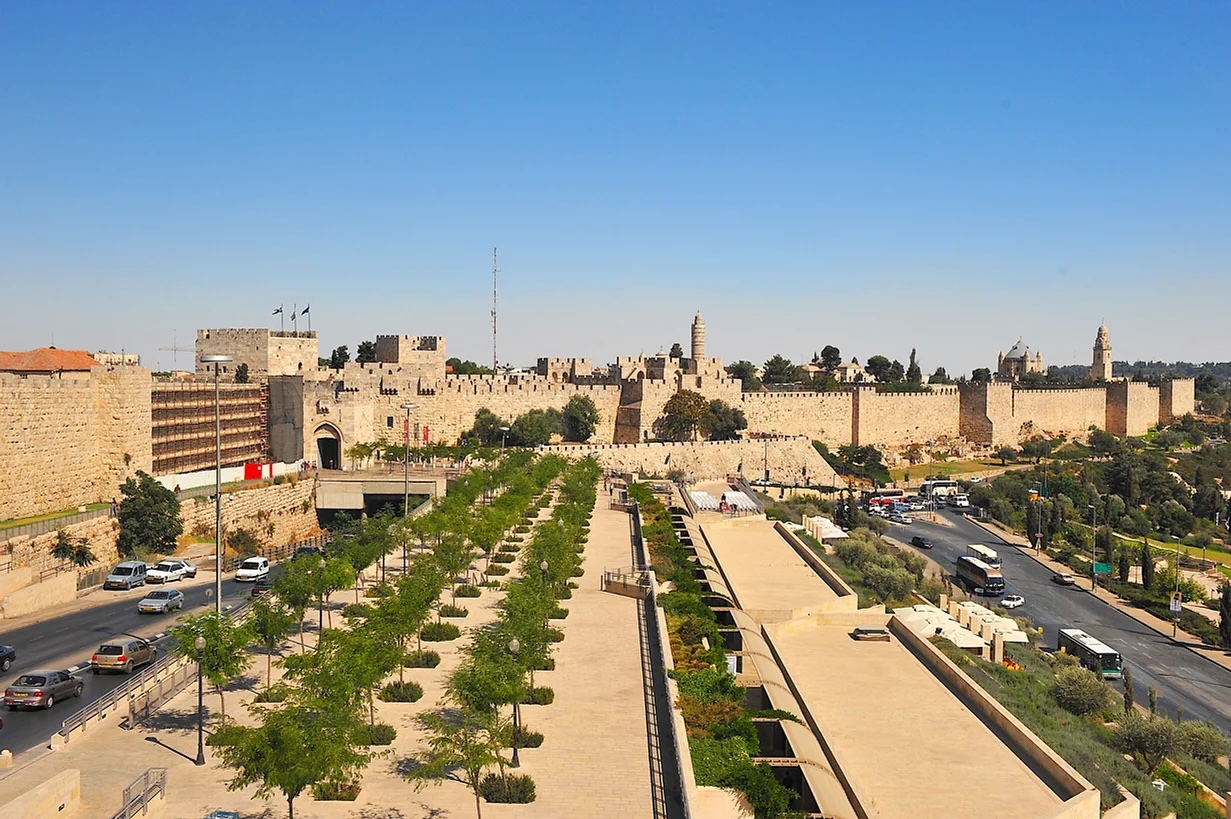The content and images in this curriculum and presentation are copyrighted and trademarked. Photographs’ subject matter is divided into categories. All photographs are by Zion Ozeri. You may only use the presentation or parts of it while implementing the DiverCity Lens in your school. For any other use, including reproduction, you must get special permission from Zion Ozeri. The use of the following content, which may be objectionable, is at your own risk, and Zion Ozeri holds no responsibility to evaluate the accuracy, completeness, and usefulness of any content provided, prior to your use. You may contact Zion Ozeri for any questions: zion@zionozeri.com
Kingship and Sovreignty
Lesson Plan by Zion Ozeri and Josh Feinberg

Old Walls, Jerusalem, 2009
All images © Zion Ozeri. All Rights Reserved.
Look closely at this photograph:
- What clues in the picture tell you that this photo was taken in recent times? What clues or remnants from the past do you see in this photograph?
- Israels modern capital city, Jerusalem, was built on the site of the ancient city of Jerusalem, where King David ruled. What do you think it feels like to live in a city that has both modern and ancient elements? Why do you think Israel chose to place its modern capital city on the site of the ancient capital?
- The ancient city of Jerusalem served as a logical location for the capital because it was on high ground and centrally located. What do you think makes for a good capital city in modern times? What, if any, elements of these features do you see in the picture?
You can learn more about the city of Jerusalem here:
Jerusalem | My Jewish Learning
Now read the following text, from the book of Samuel. The prophet Natan has been sent by God to speak to King David, to give him some instructions about his kingship.
II Samuel 7:8
Further, say this to My servant David: Thus said the LORD of Hosts: I took you from the pasture, from following the flock, to be ruler of My people Israel.
Discuss:
- Why do you think it might be important for people to have a single ruler who is in charge?
- David was just a shepherd before he was elevated to be king. Why do you think a shepherd might make a good king?
- If you were king, what would be your priorities? How would you lead?
- Today, Israel is governed by a democracy. Why do you think there is no longer a king? What are the benefits of a democratic government?
You can read more about King David here:
King David - Jewish Virtual Library
How King David Ascended to the Throne of Israel - National Geographic
Follow-up activities:
- Take a photograph that combines old and new elements in an interesting way. You can define old and new in any ways youd like (old doesnt have to mean ancient). What ideas or feelings can you evoke by combining old and new in this way?
- Interview and photograph someone whom you identify as a leader. Think about the following as you compile a visual and written profile of your selected leader:
- What makes this person a leader?
- What leadership qualities do you think this person possesses?
- Who does this person lead?
- How does this person lead?
- What are the biggest challenges this person faces as a leader? How will you depict this person in a photograph to emphasize his or her leadership role or abilities? (e.g., in what setting will you photograph this person? How will you pose this person? What clothing or props might you include in the portrait?)
